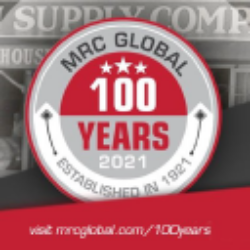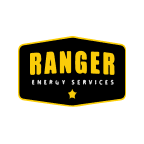MRC

MRC Global Inc.
MRC
(2.0)13,20 USD
7.66% ROA
11.37% ROE
10.2x PER
1.071.422.805,00 USD
21.18% DER
0% Yield
3.09% NPM
MRC Global Inc. Stock Analysis
MRC Global Inc. Fundamental Analysis
Fundamental analysis in stock investing is like studying the foundation of a house before buying it. It involves looking at a company's financial health, like its earnings, assets, and debts, to determine if it's a good investment based on its fundamental strength and potential for growth.
| # | Analysis | Rating |
|---|---|---|
| 1 |
ROE
The stock's ROE falls within an average range (13.66%), demonstrating satisfactory profitability and efficiency in utilizing shareholders' equity. |
|
| 2 |
ROA
The stock's ROA (6.59%) shows that it's doing a pretty good job at making money from its assets, making it a solid choice to invest and earn steady profits. |
|
| 3 |
PBV
The stock's PBV ratio (1.15x) indicates a justifiable valuation, presenting a compelling choice for investors seeking reasonable returns. |
|
| 4 |
DER
The stock maintains a fair debt to equity ratio (75%), indicating a reasonable balance between the money it owes and the ownership it possesses. |
|
| 5 |
Revenue Growth
Over the past three years, this company's revenue has consistently grown, demonstrating a positive financial trend that makes it an appealing choice. |
|
| 6 |
Net Profit Growth
The net profit of this company has shown steady growth over the past three years, highlighting its positive financial trajectory and making it an appealing choice for potential investors. |
|
| 7 |
Assets Growth
With a track record of continuous revenue growth in the last three years, this company offers a promising investment opportunity |
|
| 8 |
Graham Number
Based on the Graham number, this company's stock price appears to be lower than its intrinsic value, signaling a potentially favorable investment choice. |
|
| 9 |
Dividend Growth
The company's dividend growth has been flat for the past three years, raising concerns for potential investors seeking reliable returns. |
|
| 10 |
Dividend
The company has not distributed any dividends in the past three years, which may raise concerns for investors looking for regular income from their investments. |
|
| 11 |
Buffet Intrinsic Value
Based on Warren Buffett's formula, the company's stock seems overpriced (-1.699), indicating a potential drawback for investors as its market price exceeds its estimated intrinsic value. |
MRC Global Inc. Technical Analysis
Technical analysis in stock investing is like reading the patterns on a weather map to predict future weather conditions. It involves studying past stock price movements and trading volumes to make predictions about where a stock's price might go next, without necessarily looking at the company's financial health.
| # | Analysis | Recommendation |
|---|---|---|
| 1 | Awesome Oscillator | Buy |
| 2 | MACD | Sell |
| 3 | RSI | Hold |
| 4 | Stoch RSI | Sell |
MRC Global Inc. Price Chart
Financial Statements
Financial statements are like report cards for companies. They show how much money a company makes (income statement), what it owns and owes (balance sheet), and where it spends its money (cash flow statement), helping stock investors understand if a company is healthy and worth investing in.
Income Statements
An income statement for a company is like a scoreboard for its profits and losses. It shows how much money the company made (revenue) and how much it spent to make that money (expenses), helping stock investors see if a company is making a profit or not.
Revenue in stock investing is the total amount of money a company earns from its sales, and it's a key factor that investors consider to assess a company's financial performance and growth potential.
| Year | Revenue | Growth |
|---|---|---|
| 2009 | 3.661.922.000 | |
| 2010 | 3.845.536.000 | 4.77% |
| 2011 | 4.832.423.000 | 20.42% |
| 2012 | 5.570.858.000 | 13.26% |
| 2013 | 5.230.792.000 | -6.5% |
| 2014 | 5.933.212.000 | 11.84% |
| 2015 | 4.528.613.000 | -31.02% |
| 2016 | 3.041.000.000 | -48.92% |
| 2017 | 3.646.000.000 | 16.59% |
| 2018 | 4.172.000.000 | 12.61% |
| 2019 | 3.662.000.000 | -13.93% |
| 2020 | 2.560.000.000 | -43.05% |
| 2021 | 2.666.000.000 | 3.98% |
| 2022 | 3.363.000.000 | 20.73% |
| 2023 | 3.552.000.000 | 5.32% |
| 2023 | 3.412.000.000 | -4.1% |
| 2024 | 3.328.000.000 | -2.52% |
Research and Development Expenses are the costs a company incurs to create and improve its products or services, which can be important for investors to evaluate a company's innovation and potential for future growth.
| Year | Research and Development Expenses | Growth |
|---|---|---|
| 2009 | 0 | |
| 2010 | 0 | 0% |
| 2011 | 0 | 0% |
| 2012 | 0 | 0% |
| 2013 | 0 | 0% |
| 2014 | 0 | 0% |
| 2015 | 0 | 0% |
| 2016 | 0 | 0% |
| 2017 | 0 | 0% |
| 2018 | 0 | 0% |
| 2019 | 0 | 0% |
| 2020 | 0 | 0% |
| 2021 | 0 | 0% |
| 2022 | 0 | 0% |
| 2023 | 0 | 0% |
| 2023 | 0 | 0% |
| 2024 | 0 | 0% |
General and Administrative Expenses are the costs a company incurs to run its day-to-day operations, such as office rent, salaries, and utilities, which investors consider to understand a company's overall efficiency and management effectiveness.
| Year | General and Administrative Expenses | Growth |
|---|---|---|
| 2009 | 0 | |
| 2010 | 0 | 0% |
| 2011 | 513.563.000 | 100% |
| 2012 | 606.753.000 | 15.36% |
| 2013 | 642.994.000 | 5.64% |
| 2014 | 715.958.000 | 10.19% |
| 2015 | 606.503.000 | -18.05% |
| 2016 | 524.000.000 | -15.74% |
| 2017 | 536.000.000 | 2.24% |
| 2018 | 562.000.000 | 4.63% |
| 2019 | 0 | 0% |
| 2020 | 0 | 0% |
| 2021 | 0 | 0% |
| 2022 | 0 | 0% |
| 2023 | 0 | 0% |
| 2023 | 0 | 0% |
| 2024 | 0 | 0% |
EBITDA stands for Earnings Before Interest, Taxes, Depreciation, and Amortization. It is a measure that helps stock investors analyze a company's profitability by looking at its earnings without considering certain expenses. This helps to get a clearer picture of the company's financial performance and its ability to generate cash flow.
| Year | EBITDA | Growth |
|---|---|---|
| 2009 | -177.159.000 | |
| 2010 | 134.895.000 | 231.33% |
| 2011 | 260.310.000 | 48.18% |
| 2012 | 362.266.000 | 28.14% |
| 2013 | 386.175.000 | 6.19% |
| 2014 | 377.956.000 | -2.17% |
| 2015 | -213.000.000 | 277.44% |
| 2016 | 13.000.000 | 1738.46% |
| 2017 | 113.000.000 | 88.5% |
| 2018 | 195.000.000 | 42.05% |
| 2019 | 169.000.000 | -15.38% |
| 2020 | -209.000.000 | 180.86% |
| 2021 | 52.000.000 | 501.92% |
| 2022 | 173.000.000 | 69.94% |
| 2023 | 272.000.000 | 36.4% |
| 2023 | 225.000.000 | -20.89% |
| 2024 | 228.000.000 | 1.32% |
Gross profit is the money a company makes from selling its products or services after subtracting the cost of producing or providing them, and it is an important measure for investors to understand a company's profitability.
| Year | Gross Profit | Growth |
|---|---|---|
| 2009 | 547.994.000 | |
| 2010 | 518.102.000 | -5.77% |
| 2011 | 708.152.000 | 26.84% |
| 2012 | 1.013.743.000 | 30.14% |
| 2013 | 954.759.000 | -6.18% |
| 2014 | 1.018.106.000 | 6.22% |
| 2015 | 786.065.000 | -29.52% |
| 2016 | 468.000.000 | -67.96% |
| 2017 | 582.000.000 | 19.59% |
| 2018 | 689.000.000 | 15.53% |
| 2019 | 653.000.000 | -5.51% |
| 2020 | 431.000.000 | -51.51% |
| 2021 | 417.000.000 | -3.36% |
| 2022 | 610.000.000 | 31.64% |
| 2023 | 732.000.000 | 16.67% |
| 2023 | 690.000.000 | -6.09% |
| 2024 | 692.000.000 | 0.29% |
Net income in stock investing is like the money a company actually gets to keep as profit after paying all its bills, and it's an important measure to understand how well a company is doing financially.
| Year | Net Profit | Growth |
|---|---|---|
| 2009 | -339.771.000 | |
| 2010 | -51.824.000 | -555.62% |
| 2011 | 28.984.000 | 278.8% |
| 2012 | 117.958.000 | 75.43% |
| 2013 | 152.095.000 | 22.44% |
| 2014 | 144.110.000 | -5.54% |
| 2015 | -331.579.000 | 143.46% |
| 2016 | -83.000.000 | -299.49% |
| 2017 | 50.000.000 | 266% |
| 2018 | 74.000.000 | 32.43% |
| 2019 | 39.000.000 | -89.74% |
| 2020 | -274.000.000 | 114.23% |
| 2021 | -39.000.000 | -602.56% |
| 2022 | 75.000.000 | 152% |
| 2023 | 140.000.000 | 46.43% |
| 2023 | 114.000.000 | -22.81% |
| 2024 | 120.000.000 | 5% |
EPS, or earnings per share, is a measure that shows how much profit a company has earned for each outstanding share of its stock, and it is important for stock investors as it helps understand the profitability of a company and compare it with other companies in the market.
| Year | Earning per Share (EPS) | Growth |
|---|---|---|
| 2009 | -4 | |
| 2010 | -1 | 0% |
| 2011 | 0 | 0% |
| 2012 | 1 | 100% |
| 2013 | 2 | 0% |
| 2014 | 1 | 0% |
| 2015 | -3 | 133.33% |
| 2016 | -1 | 0% |
| 2017 | 0 | 0% |
| 2018 | 1 | 0% |
| 2019 | 0 | 0% |
| 2020 | -3 | 100% |
| 2021 | 0 | 0% |
| 2022 | 1 | 0% |
| 2023 | 1 | 100% |
| 2023 | 1 | 0% |
| 2024 | 1 | 0% |
Cashflow Statements
Cashflow statements show the movement of money in and out of a company, helping stock investors understand how much money a company makes and spends. By examining cashflow statements, investors can assess if a company is generating enough cash to pay its bills, invest in growth, and provide returns to stockholders.
Free cash flow is the leftover cash that a company generates after covering its operating expenses and capital expenditures, which is important for stock investors as it shows how much money a company has available to invest in growth, pay dividends, or reduce debt.
| Year | Free Cashflow | Growth |
|---|---|---|
| 2009 | 488.794.000 | |
| 2010 | 98.151.000 | -398% |
| 2011 | -120.953.000 | 181.15% |
| 2012 | 213.883.000 | 156.55% |
| 2013 | 301.520.000 | 29.07% |
| 2014 | -126.456.000 | 338.44% |
| 2015 | 651.173.000 | 119.42% |
| 2016 | 220.000.000 | -195.99% |
| 2017 | -78.000.000 | 382.05% |
| 2018 | -31.000.000 | -151.61% |
| 2019 | 224.000.000 | 113.84% |
| 2020 | 250.000.000 | 10.4% |
| 2021 | 46.000.000 | -443.48% |
| 2022 | -31.000.000 | 248.39% |
| 2023 | 97.000.000 | 131.96% |
| 2023 | 166.000.000 | 41.57% |
| 2024 | 55.000.000 | -201.82% |
Operating cash flow represents the cash generated or consumed by a company's day-to-day operations, excluding external investing or financing activities, and is crucial for stock investors as it shows how much cash a company is generating from its core business operations.
| Year | Operating Cashflow | Growth |
|---|---|---|
| 2009 | 505.492.000 | |
| 2010 | 112.458.000 | -349.49% |
| 2011 | -102.897.000 | 209.29% |
| 2012 | 240.072.000 | 142.86% |
| 2013 | 323.588.000 | 25.81% |
| 2014 | -106.378.000 | 404.19% |
| 2015 | 689.895.000 | 115.42% |
| 2016 | 253.000.000 | -172.69% |
| 2017 | -48.000.000 | 627.08% |
| 2018 | -11.000.000 | -336.36% |
| 2019 | 242.000.000 | 104.55% |
| 2020 | 261.000.000 | 7.28% |
| 2021 | 56.000.000 | -366.07% |
| 2022 | -20.000.000 | 380% |
| 2023 | 102.000.000 | 119.61% |
| 2023 | 181.000.000 | 43.65% |
| 2024 | 63.000.000 | -187.3% |
Capex, short for capital expenditures, refers to the money a company spends on acquiring or upgrading tangible assets like buildings, equipment, or technology, which is important for stock investors as it indicates how much a company is investing in its infrastructure to support future growth and profitability.
| Year | Capital Expenditure | Growth |
|---|---|---|
| 2009 | 16.698.000 | |
| 2010 | 14.307.000 | -16.71% |
| 2011 | 18.056.000 | 20.76% |
| 2012 | 26.189.000 | 31.06% |
| 2013 | 22.068.000 | -18.67% |
| 2014 | 20.078.000 | -9.91% |
| 2015 | 38.722.000 | 48.15% |
| 2016 | 33.000.000 | -17.34% |
| 2017 | 30.000.000 | -10% |
| 2018 | 20.000.000 | -50% |
| 2019 | 18.000.000 | -11.11% |
| 2020 | 11.000.000 | -63.64% |
| 2021 | 10.000.000 | -10% |
| 2022 | 11.000.000 | 9.09% |
| 2023 | 5.000.000 | -120% |
| 2023 | 15.000.000 | 66.67% |
| 2024 | 8.000.000 | -87.5% |
Balance Sheet
Balance sheets provide a snapshot of a company's financial health and its assets (such as cash, inventory, and property) and liabilities (like debts and obligations) at a specific point in time. For stock investors, balance sheets help assess the company's overall worth and evaluate its ability to meet financial obligations and support future growth.
Equity refers to the ownership interest or stake that shareholders have in a company, representing their claim on its assets and earnings after all debts and liabilities are paid.
| Year | Equity | Growth |
|---|---|---|
| 2009 | 743.898.000 | |
| 2010 | 689.758.000 | -7.85% |
| 2011 | 720.862.000 | 4.31% |
| 2012 | 1.185.922.000 | 39.22% |
| 2013 | 1.338.268.000 | 11.38% |
| 2014 | 1.397.215.000 | 4.22% |
| 2015 | 1.311.312.000 | -6.55% |
| 2016 | 1.118.000.000 | -17.29% |
| 2017 | 1.114.000.000 | -0.36% |
| 2018 | 1.047.000.000 | -6.4% |
| 2019 | 997.000.000 | -5.02% |
| 2020 | 705.000.000 | -41.42% |
| 2021 | 678.000.000 | -3.98% |
| 2022 | 741.000.000 | 8.5% |
| 2023 | 843.000.000 | 12.1% |
| 2023 | 818.000.000 | -3.06% |
| 2024 | 878.000.000 | 6.83% |
Assets represent the valuable resources that a company owns, such as cash, inventory, property, and equipment, and understanding a company's assets helps investors assess its value and potential for generating future profits.
| Year | Assets | Growth |
|---|---|---|
| 2009 | 3.083.156.000 | |
| 2010 | 2.991.194.000 | -3.07% |
| 2011 | 3.227.687.000 | 7.33% |
| 2012 | 3.369.727.000 | 4.22% |
| 2013 | 3.335.682.000 | -1.02% |
| 2014 | 3.873.821.000 | 13.89% |
| 2015 | 2.501.546.000 | -54.86% |
| 2016 | 2.164.000.000 | -15.6% |
| 2017 | 2.340.000.000 | 7.52% |
| 2018 | 2.434.000.000 | 3.86% |
| 2019 | 2.325.000.000 | -4.69% |
| 2020 | 1.781.000.000 | -30.54% |
| 2021 | 1.671.000.000 | -6.58% |
| 2022 | 1.895.000.000 | 11.82% |
| 2023 | 1.886.000.000 | -0.48% |
| 2023 | 1.958.000.000 | 3.68% |
| 2024 | 1.787.000.000 | -9.57% |
Liabilities refer to the financial obligations or debts that a company owes to creditors or external parties, and understanding a company's liabilities is important for investors as it helps assess the company's financial risk and ability to meet its obligations.
| Year | Liabilities | Growth |
|---|---|---|
| 2009 | 2.339.258.000 | |
| 2010 | 2.301.436.000 | -1.64% |
| 2011 | 2.506.825.000 | 8.19% |
| 2012 | 2.183.805.000 | -14.79% |
| 2013 | 1.997.414.000 | -9.33% |
| 2014 | 2.476.606.000 | 19.35% |
| 2015 | 1.190.234.000 | -108.08% |
| 2016 | 1.046.000.000 | -13.79% |
| 2017 | 1.226.000.000 | 14.68% |
| 2018 | 1.387.000.000 | 11.61% |
| 2019 | 1.328.000.000 | -4.44% |
| 2020 | 1.076.000.000 | -23.42% |
| 2021 | 993.000.000 | -8.36% |
| 2022 | 1.154.000.000 | 13.95% |
| 2023 | 1.043.000.000 | -10.64% |
| 2023 | 1.140.000.000 | 8.51% |
| 2024 | 909.000.000 | -25.41% |
MRC Global Inc. Financial Ratio (TTM)
Valuation Metrics
- Revenue per Share
- 38.66
- Net Income per Share
- 1.23
- Price to Earning Ratio
- 10.2x
- Price To Sales Ratio
- 0.33x
- POCF Ratio
- 3.67
- PFCF Ratio
- 4
- Price to Book Ratio
- 1.22
- EV to Sales
- 0.42
- EV Over EBITDA
- 6.56
- EV to Operating CashFlow
- 4.74
- EV to FreeCashFlow
- 5.16
- Earnings Yield
- 0.1
- FreeCashFlow Yield
- 0.25
- Market Cap
- 1,07 Bil.
- Enterprise Value
- 1,38 Bil.
- Graham Number
- 16.9
- Graham NetNet
- -2.87
Income Statement Metrics
- Net Income per Share
- 1.23
- Income Quality
- 2.78
- ROE
- 0.12
- Return On Assets
- 0.06
- Return On Capital Employed
- 0.12
- Net Income per EBT
- 0.8
- EBT Per Ebit
- 0.83
- Ebit per Revenue
- 0.05
- Effective Tax Rate
- 0.2
Margins
- Sales, General, & Administrative to Revenue
- 0
- Research & Developement to Revenue
- 0
- Stock Based Compensation to Revenue
- 0
- Gross Profit Margin
- 0.2
- Operating Profit Margin
- 0.05
- Pretax Profit Margin
- 0.04
- Net Profit Margin
- 0.03
Dividends
- Dividend Yield
- 0
- Dividend Yield %
- 0
- Payout Ratio
- 0.23
- Dividend Per Share
- 0
Operating Metrics
- Operating Cashflow per Share
- 3.43
- Free CashFlow per Share
- 3.15
- Capex to Operating CashFlow
- 0.08
- Capex to Revenue
- 0.01
- Capex to Depreciation
- 0.6
- Return on Invested Capital
- 0.12
- Return on Tangible Assets
- 0.08
- Days Sales Outstanding
- 53.3
- Days Payables Outstanding
- 52.62
- Days of Inventory on Hand
- 70.86
- Receivables Turnover
- 6.85
- Payables Turnover
- 6.94
- Inventory Turnover
- 5.15
- Capex per Share
- 0.28
Balance Sheet
- Cash per Share
- 0,58
- Book Value per Share
- 10,31
- Tangible Book Value per Share
- 5.41
- Shareholders Equity per Share
- 10.31
- Interest Debt per Share
- 2.54
- Debt to Equity
- 0.21
- Debt to Assets
- 0.1
- Net Debt to EBITDA
- 1.48
- Current Ratio
- 2.08
- Tangible Asset Value
- 0,46 Bil.
- Net Current Asset Value
- 0,17 Bil.
- Invested Capital
- 1252000000
- Working Capital
- 0,56 Bil.
- Intangibles to Total Assets
- 0.23
- Average Receivables
- 0,48 Bil.
- Average Payables
- 0,39 Bil.
- Average Inventory
- 527500000
- Debt to Market Cap
- 0.17
Dividends
Dividends in stock investing are like rewards that companies give to their shareholders. They are a portion of the company's profits distributed to investors, typically in the form of cash payments, as a way for them to share in the company's success.
| Year | Dividends | Growth |
|---|
MRC Global Inc. Profile
About MRC Global Inc.
MRC Global Inc., through its subsidiaries, distributes pipes, valves, fittings, and other infrastructure products and services to the energy, industrial, and gas utility end-markets in the United States, Canada, and internationally. It offers ball, butterfly, gate, globe, check, diaphragm, needle, and plug valves; and other products, such as lined corrosion resistant piping systems, control valves, valve automation, and top work components, as well as valve modification services; and measurement, steam, and instrumentation products. The company also provides carbon steel fittings and flanges comprising carbon weld fittings, flanges, and piping components; stainless steel, alloy and corrosion resistant pipes, tubing, fittings, and flanges; and carbon line pipes. In addition, it offers natural gas distribution products, including risers, meters, polyethylene pipes and fittings, and various other components and industrial supplies; oilfield and industrial supplies and completion equipment, such as high density polyethylene pipes, fittings, and rods; and specialized production equipment comprising tanks and separators. Further, the company provides various services, such as product testing, manufacturer assessments, multiple daily deliveries, volume purchasing, inventory and zone store management and warehousing, technical support, training, just-in-time delivery, truck stocking, order consolidation, product tagging and system interfaces, and valve inspection and repair services; and various other services under the ValidTorque and FastTrack names. Its products are used in the construction, maintenance, repair, and overhaul of equipment used in extreme operating conditions, including high pressure, high/low temperature, and high corrosive and abrasive environments. The company was formerly known as McJunkin Red Man Holding Corporation and changed its name to MRC Global Inc. in January 2012. MRC Global Inc. was founded in 1921 and is headquartered in Houston, Texas.
- CEO
- Mr. Robert James Saltiel Jr.
- Employee
- 2.800
- Address
-
1301 McKinney Street
Houston, 77010
MRC Global Inc. Executives & BODs
| # | Name | Age |
|---|---|---|
| 1 |
Ms. Shweta Kurvey-Mishra Senior Vice President & Chief Human Resources Officer |
70 |
| 2 |
Mr. Robert James Saltiel Jr. President, Chief Executive Officer & Director |
70 |
| 3 |
Mr. Daniel J. Churay J.D. Executive Vice President of Corporate Affairs, General Counsel & Corporate Secretary |
70 |
| 4 |
Mr. Rance Long Senior Vice President of Marketing Strategy |
70 |
| 5 |
Mr. Kelly Youngblood CPA Executive Vice President & Chief Financial Officer |
70 |
| 6 |
Mr. Grant R. Bates Senior Vice President of North America Operations & E-Commerce |
70 |
| 7 |
Ms. Gillian Anderson Vice President & Chief Accounting Officer |
70 |
| 8 |
Ms. Monica Schafer Broughton Vice President of Investor Relations |
70 |
| 9 |
Mr. Jack McCarthy Senior Vice President of Supply Chain, Quality & Technical Sales |
70 |
| 10 |
Mr. Steve Smith Senior Vice President of International Operations |
70 |












